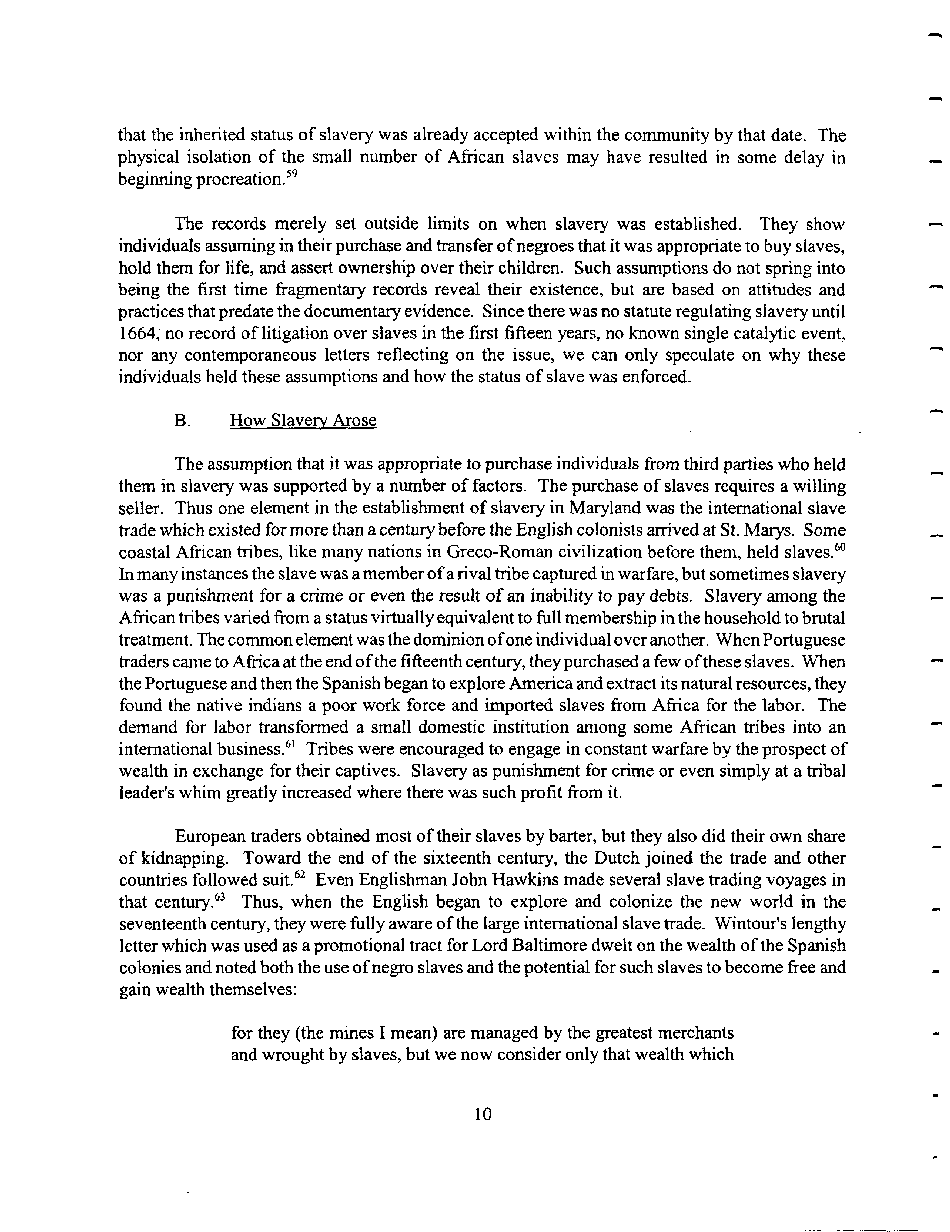|
that the inherited status of slavery was already accepted within the community by that date. The
physical isolation of the small number of African slaves may have resulted in some delay in
beginning procreation.59
The records merely set outside limits on when slavery was established. They show
individuals assuming in their purchase and transfer of negroes that it was appropriate to buy slaves,
hold them for life, and assert ownership over their children. Such assumptions do not spring into
being the first time fragmentary records reveal their existence, but are based on attitudes and
practices that predate the documentary evidence. Since there was no statute regulating slavery until
1664, no record of litigation over slaves in the first fifteen years, no known single catalytic event,
nor any contemporaneous letters reflecting on the issue, we can only speculate on why these
individuals held these assumptions and how the status of slave was enforced.
B. How Slavery Arose
The assumption that it was appropriate to purchase individuals from third parties who held
them in slavery was supported by a number of factors. The purchase of slaves requires a willing
seller. Thus one element in the establishment of slavery in Maryland was the international slave
trade which existed for more than a century before the English colonists arrived at St. Marys. Some
coastal African tribes, like many nations in Greco-Roman civilization before them, held slaves.60
In many instances the slave was a member of a rival tribe captured in warfare, but sometimes slavery
was a punishment for a crime or even the result of an inability to pay debts. Slavery among the
African tribes varied from a status virtually equivalent to full membership in the household to brutal
treatment. The common element was the dominion of one individual over another. When Portuguese
traders came to Africa at the end of the fifteenth century, they purchased a few of these slaves. When
the Portuguese and then the Spanish began to explore America and extract its natural resources, they
found the native indians a poor work force and imported slaves from Africa for the labor. The
demand for labor transformed a small domestic institution among some African tribes into an
international business.61 Tribes were encouraged to engage in constant warfare by the prospect of
wealth in exchange for their captives. Slavery as punishment for crime or even simply at a tribal
leader's whim greatly increased where there was such profit from it.
European traders obtained most of their slaves by barter, but they also did their own share
of kidnapping. Toward the end of the sixteenth century, the Dutch joined the trade and other
countries followed suit.62 Even Englishman John Hawkins made several slave trading voyages in
that century.63 Thus, when the English began to explore and colonize the new world in the
seventeenth century, they were fully aware of the large international slave trade. Wintour's lengthy
letter which was used as a promotional tract for Lord Baltimore dwelt on the wealth of the Spanish
colonies and noted both the use of negro slaves and the potential for such slaves to become free and
gain wealth themselves:
for they (the mines I mean) are managed by the greatest merchants
and wrought by slaves, but we now consider only that wealth which
10
�
|

